9 Best Native Plants for Portland, Oregon
BY JEFFERY KEUSSEYAN | MAY 20TH, 2023 | LAWN CARE, OREGON, PORTLANDLocated in the northwest of Oregon, Portland is a unique city with its endless landscapes, panoramic vistas, and beautiful hiking trails. You can truly enjoy the endless wonders that mother nature has to offer. With the best native plants for Portland, you can have a piece of that natural landscape in your own backyard.
Taking into consideration Portland’s climate and its plant hardiness zone, we have come up with a native plants list to help you get started on redefining your outdoor landscape.
In this article, we will cover:
- 9 Best Native Plants for Portland
- How to Choose Native Plants for Your Portland Landscape
- FAQ About Portland Native Plants
- Where to Find Native Plants in Portland
9 Best Native Plants for Portland
Portland lies in USDA plant hardiness zones 8b and 9a. When doing your research, make sure the plants you select are suitable for this city in Multnomah County. Plants that are listed as native to Oregon may not necessarily thrive in Portland. They could be more suitable for southern or eastern parts of the state.
The plants we’ve covered below are a great fit for your Portland lawn:
1. Vine Maple (Acer circinatum)
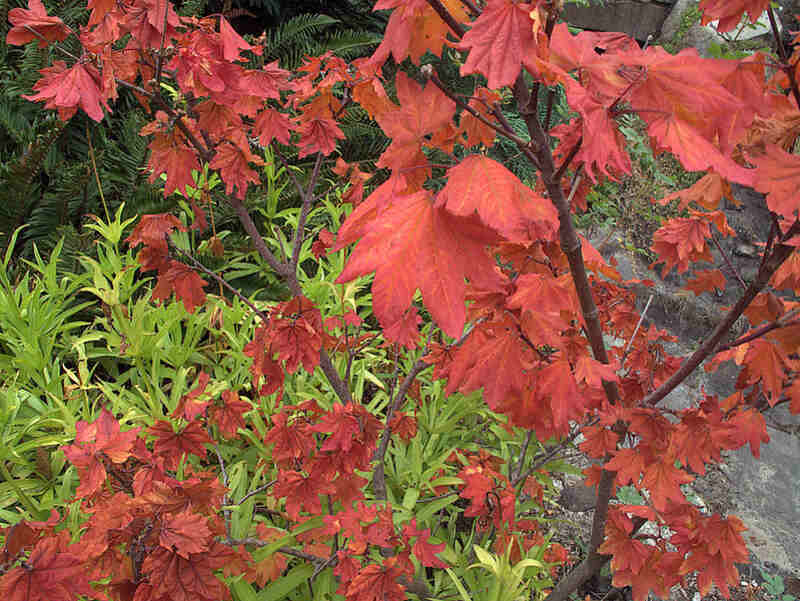
Photo Credit: John Rusk / Flickr / CC BY 2.0
Vine maple is most commonly grown as a large shrub, but also works as a small to medium-sized tree. It develops multi trunks with reddish-green bark. Its foliage is bright green in spring, with attractive shades of orange and red in the fall. Vine maple has tiny purple and white flowers that are borne in short clusters, followed by red-winged fruits that are consumed by mammals and hummingbirds.
To control this native tree’s shape, prune during the dormant season. Vine maple performs well in cooler climates, and can be used as a very attractive lawn specimen.
Plant type: Small tree, shrub
USDA Hardiness zones: 6 to 9
Sun: Full sun to partial shade
Soil: Loam, sand, clay, moist, well-drained
Duration: Perennial
Bloom time: March – May
Water needs: Medium
Mature height: 15 to 30 feet, sometimes reaching up to 40 feet
Maintenance: Low
2. Saskatoon Serviceberry (Amelanchier alnifolia)
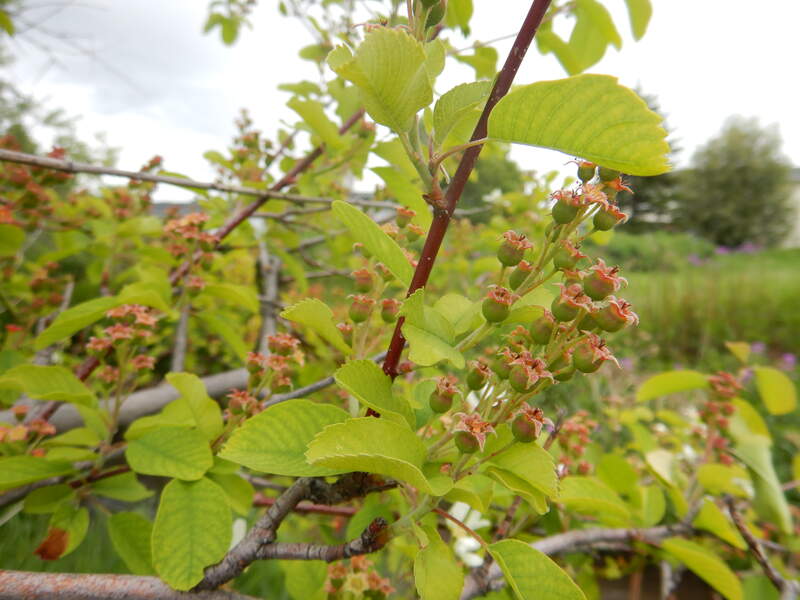
Photo Credit: Matt Lavin / Wikimedia Commons / CC BY-SA 2.0
Saskatoon serviceberry is a deciduous plant that can be used as an attractive, ornamental shrub. Known for being drought-tolerant, the shrub has a foliage of light green leaves that turn orange-red in the fall.
In mid-spring, compact clusters of white flowers emerge just before the leaves. They are followed by sweet, blue-colored berries in early summer. These berries are consumed by both humans and songbirds. Additionally, saskatoon serviceberry is a great plant for erosion control.
Plant type: Shrub
USDA Hardiness Zone: 4 to 9
Sun: Full sun or partial shade
Soil: Loamy or sandy; well-drained
Duration: Perennial
Fragrance: Lightly scented
Bloom time: Spring and summer
Water needs: Low
Mature height: 3 to 16 feet
Maintenance: Low
3. Red Alder (Alnus rubra)
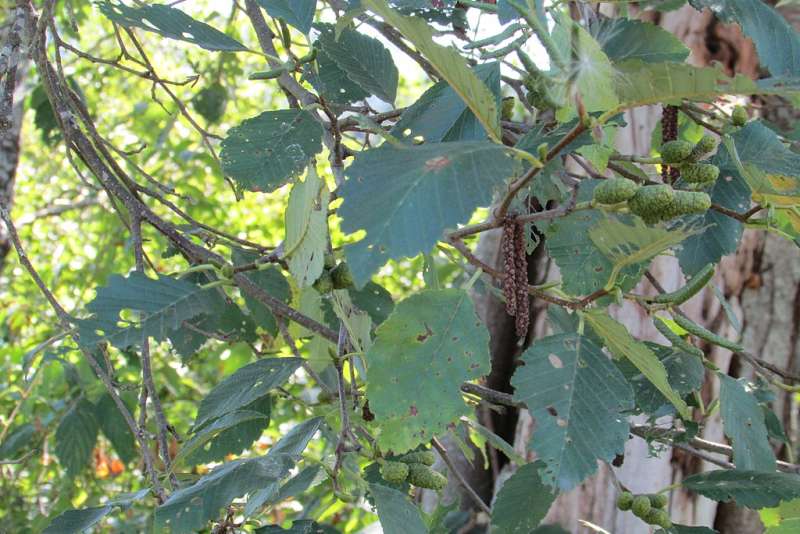
Photo Credit: Chris Light / Wikimedia Commons / CC BY-SA 4.0
This medium-sized, deciduous tree is the largest American alder. It has a thin, smooth bark that is often covered with moss. In early to mid-spring, long male catkins dangle like Christmas decorations near the bare branch tips. They release clouds of pollen that attract bees and other insects.
Alder species support 255 species of caterpillars, and provide shelter for many native birds. Consider adding red alder to your landscape and help boost Portland’s ecosystem.
Plant type: Tree
USDA Hardiness Zone: 5 to 10
Sun: Full sun, partial shade, shade
Soil: Chalk, Clay, Loam, Sand
Duration: Perennial
Fragrance: Sweet and delicate spice scent
Bloom time: March – April
Water needs: Average, high
Mature height: 40 to 50 feet
Maintenance: Low
4. Red Osier Dogwood (Cornus sericea)
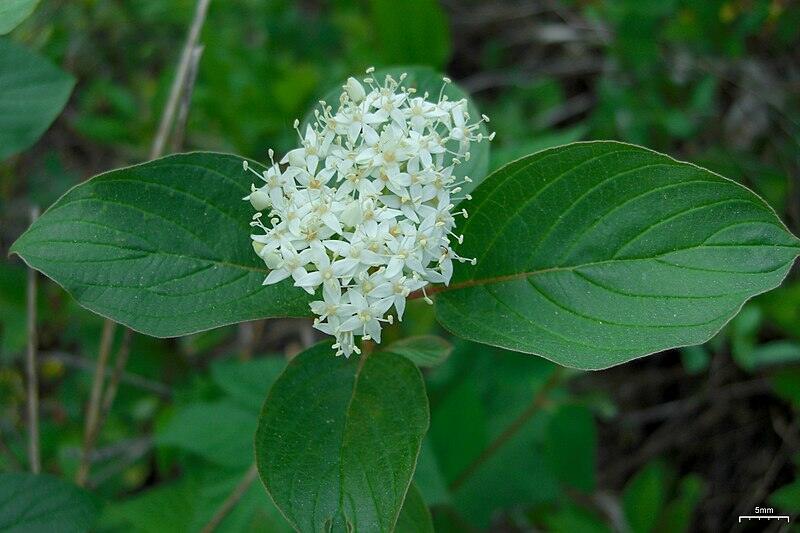
Photo Credit: Jason Hollinger / Wikimedia Commons / CC BY 2.0
Red osier dogwood is a medium-sized, ornamental shrub that adds beauty to the winter landscape. It has a rapid growth rate, and is adaptable to most soils. Its foliage consists of medium to dark green leaves which turn red-purple in fall. This perennial shrub produces fragrant, creamy-white flowers that give way to clusters of white berries. These attractive berries are often devoured by birds.
Red osier dogwood is a highly-attractive perennial that adds color in the dull and snowy months of winter.
Plant type: Shrub
USDA Hardiness Zone: 3 to 8
Sun: Full sun, partial shade, shade
Soil: Chalk, Clay, Loam, Sand
Duration: Perennial
Fragrance: Distinctive and pleasant smell
Bloom time: May – October
Water needs: Average, high
Mature height: 6 to 9 feet
Maintenance: Low
5. Oregon White Oak (Quercus garryana)
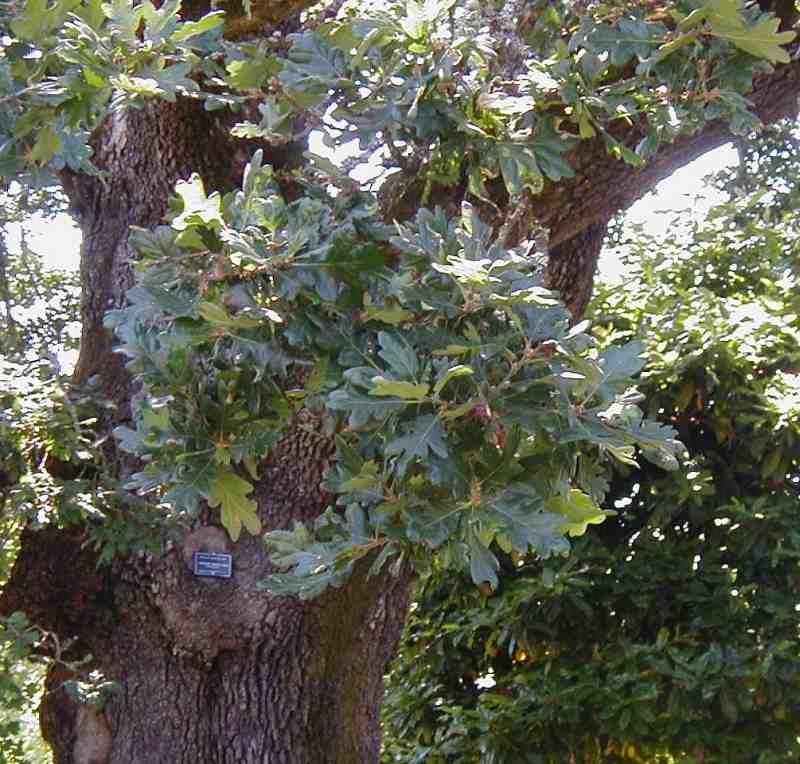
Photo Credit: MyName (Jamidwyer (talk)) / Wikimedia Commons / Public domain
Native to the West Coast, the Oregon white oak is a perennial tree that may live up to 500 years. It develops narrow crowns with small branches on clear, straight stems. Male and female flowers appear separately with new foliage in spring. The acorns ripen from August to November during the first season after flowering.
More importantly, both the acorns and foliage are a valuable source of high-protein food for many animals. Plating white oaks will be your way of supporting Portland’s wildlife habitat.
Plant type: Tree
USDA Hardiness Zone: 7 to 9
Sun: Full sun, partial shade, shade
Soil: Dry, gravelly soils
Duration: Perennial
Fragrance: 7 to 9
Bloom time: March – May
Water needs: Low
Mature height: 40 to 90 feet
Potential hazards: Acorns and young leaves are poisonous to humans and pets
Maintenance: Low
6. Bitter Cherry (Prunus emarginata)
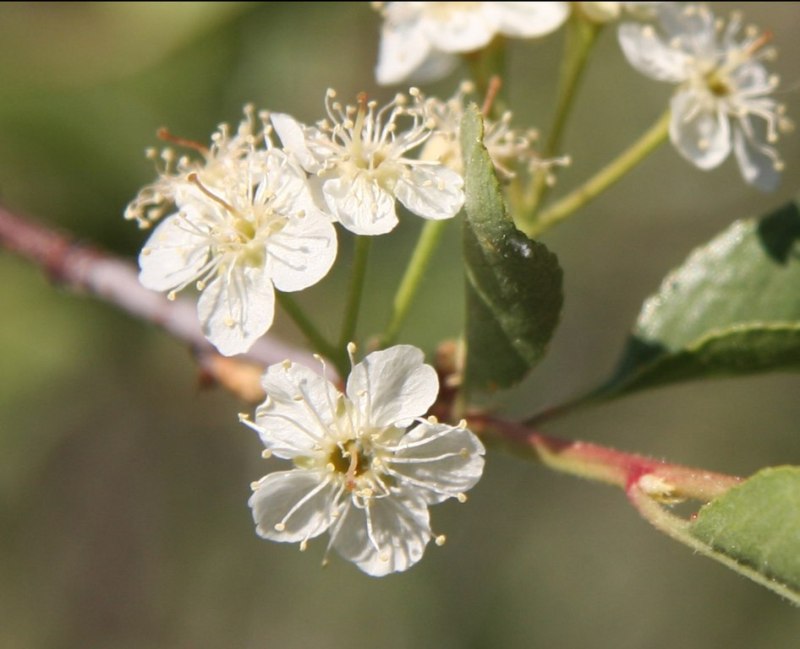
Photo Credit: Dcrjsr / Wikimedia Commons / CC BY 3.0
This deciduous, shrub-like tree is commonly used in bird or bee gardens. With a silvery-gray bark, this native perennial produces white flowers which grow in thickets. They are followed by small, fleshy drupes which are red-black in color. Adding to that, the fruit is inedible to humans. With its attractive flowers and fruit, bitter cherry is an aesthetically pleasing addition to your garden.
Plant type: Tree
USDA Hardiness Zone: 5 to 9
Sun: Full sun, partial shade
Soil: Moist soils with good drainage
Duration: Perennial
Fragrance: Soft honey scent
Bloom time: April – May
Water needs: Average
Mature height: 45 feet
Potential hazards: Seeds found inside the fruits contain poisonous substances and should not be eaten
Maintenance: Low
7. Oregon Grape Holly (Mahonia aquifolium)
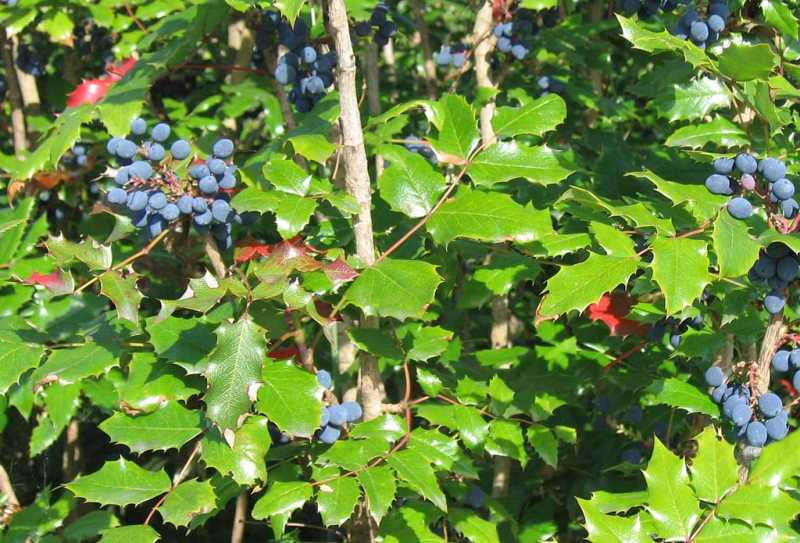
Photo Credit: The original uploader was Meggar at English Wikipedia. / Wikimedia Commons / CC BY-SA 3.0
Oregon grape holly is an evergreen, ornamental shrub that is the state flower of Oregon. Its foliage of evergreen leaves emerges bronze-red in spring before turning burgundy in fall. In spring, bright golden-yellow flowers appear just before the leaves. They are lightly-fragrant and attract many pollinators. These flowers are followed by edible berries that resemble small grapes and attract wildlife.
Overall, Oregon grape holly is another great addition to your backyard, attracting pollinators and supporting the local wildlife habitat.
Plant type: Shrub
USDA Hardiness Zone: 5 to 8
Sun: Partial sun, shade
Soil: Chalk, clay, loam, sand
Duration: Perennial
Fragrance: Flowers smell like honey
Bloom time: February – May
Water needs: Average
Mature height: 3 to 6 feet
Maintenance: Low, average
8. Pacific Bleeding Heart (Dicentra formosa)
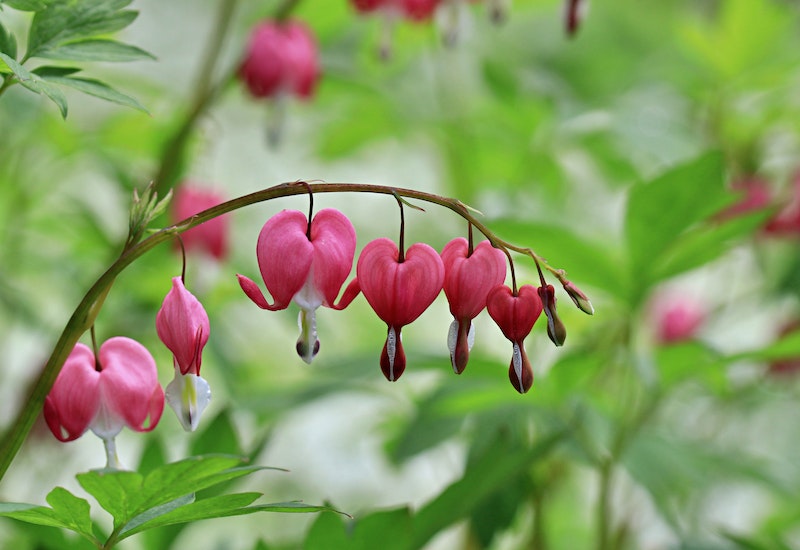
Photo Credit: Pexels
Pacific bleeding heart is a spreading, rhizomatous perennial that is easily grown in fertile, well-drained soils. It is adorned with a gray-green foliage and short racemes of nodding, heart-shaped flowers. They bloom from late spring to early summer.
It is important to note that the foliage may aggravate skin allergies, so wear gloves when handling this herbaceous perennial.
Plant type: Herbaceous perennial
USDA Hardiness Zone: 3 to 9
Sun: Partial sun
Soil: Chalk, clay, loam
Duration: Perennial
Fragrance: Flowers have a delicate, sweet scent
Bloom time: March – September
Water needs: Average
Mature height: 1 to 2 feet
Potential hazards: All parts may cause stomach upset if ingested. Foliage may aggravate skin allergies
Maintenance: Low
9. Bigleaf Maple (Acer macrophyllum)
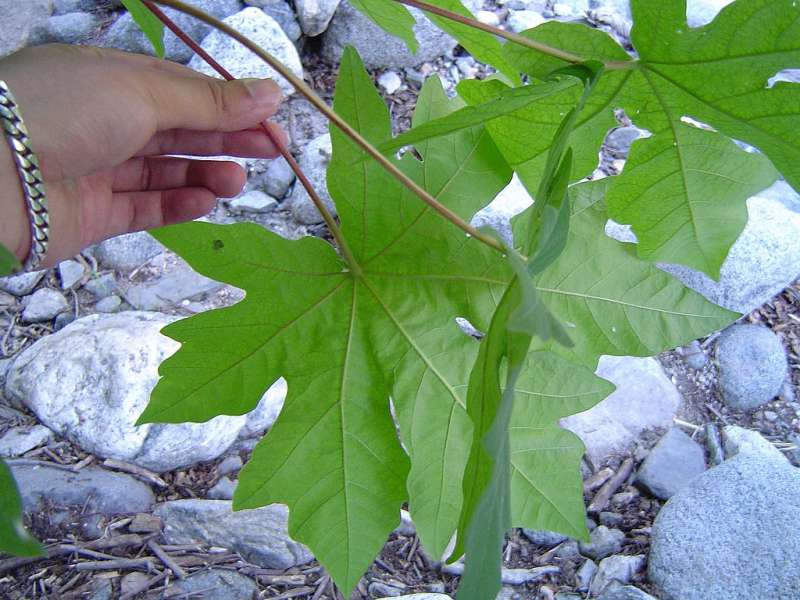
Photo Credit: Geographer at English Wikipedia / Wikimedia Commons / CC BY 2.5
Bigleaf maple is a large, deciduous tree with a rounded crown of massive, spreading branches. It is the largest maple species in North America. The deeply-lobed leaves mature to dark green before turning yellowish-orange in the fall. They give way to two-winged samaras that turn brown when ripe.
It requires very little pruning, and attracts many wildlife species. Bigleaf maple is perfect for homeowners who wish to keep a low-maintenance lawn.
Plant type: Tree
USDA Hardiness Zone: 3 to 8
Sun: Full sun, partial shade
Soil: Chalk, clay, loam, sand
Duration: Perennial
Bloom time: April – May
Water needs: Average
Mature height: 40 to 70 feet
Maintenance: Low
How to Choose Native Plants for Your Portland Landscape
As mentioned before, not all Oregon native plants are suitable for Portland. In addition to that, you need to consider the following key points when choosing plants for your garden:
- Soil type and pH
- Sun exposure levels
- Water availability
- The type of garden you want
FAQ About Portland Native Plants
As their name suggests, invasive plants are not native to Portland or the state of Oregon. They invade sites where Portland native plants grow, deny their proper growth, and even harm the local wildlife habitat. Learning about invasive plants and how to deal with them will help preserve your area’s ecosystem.
According to Oregon State University, here are some invasive plant species found in Portland:
• Herb Robert (Geranium robertianum)
• English ivy (Hedera helix)
• Russian olive (Elaeagnus angustifolia)
• English holly (Ilex aquifolium)
The Pacific Northwest offers a variety of edible fruit plants that we can locate and enjoy. After all, they are Portland native plants that can be found throughout nature. Despite the upcoming plant list, you must always be cautious with the plant you pick fruits off. If you’re not sure whether a specific fruit is edible, just be safe and avoid it altogether.
Below are some edible fruit plants in the city of Portland:
• Evergreen huckleberry (Vaccinium ovatum)
• Strawberry (Fragaria virginiana)
• Salmonberry (Rubus spectabilis)
• Thimbleberry (Rubus parviflora)
Portland’s climate allows cool-season grasses to thrive. Warm-season grasses are not recommended for this area, as they are not simply not suited for the weather conditions in northern Oregon.
The most common grasses planted in Portland are mixtures of perennial ryegrass, fine fescue, and Kentucky bluegrass.
If your lawn has to endure heavy foot traffic, Kentucky bluegrass is the perfect it. Perennial ryegrass is known for its rapid growth, and its adaptability in drought conditions. Based on your lifestyle and lawn needs, be sure to select the proper type of turfgrass.
Where to Find Native Plants in Portland
Plant species native to Portland naturally grow in wetlands, national parks, forests, or even near your home. But if you’re struggling to locate them, there are several nurseries that sell native plants, including Birds and Bees Nursery, Garden Fever!, and Livingscape Nursery.
Other Portland native plants to consider include:
- Douglas fir (Pseudotsuga menziesii)
- Globe gilia (Gilia capitata)
- Red elderberry (Sambucus racemosa)
- Western sword fern (Polystichum munitum)
- Salal (Gaultheria shallon)
- Riverbank lupine (Lupinus rivularis)
- Oceanspray (Holodiscus)
- Tall Oregon Grape (Mahonia aquifolium)
- Oregon crabapple (Malus fusca)
Looking to revamp your outdoor living space? With several low-maintenance landscaping ideas that include xeriscaping features and native perennials, you can design a distinctive and attractive outdoor space with minimal yard work.
A low-maintenance lawn will still need some amount of care. Hire a lawn care professional near you who can handle the yard’s mowing, edging, or trimming.
Main Photo Credit: Pioneer Courthouse Square / David Wilson / Flickr / CC BY 2.0